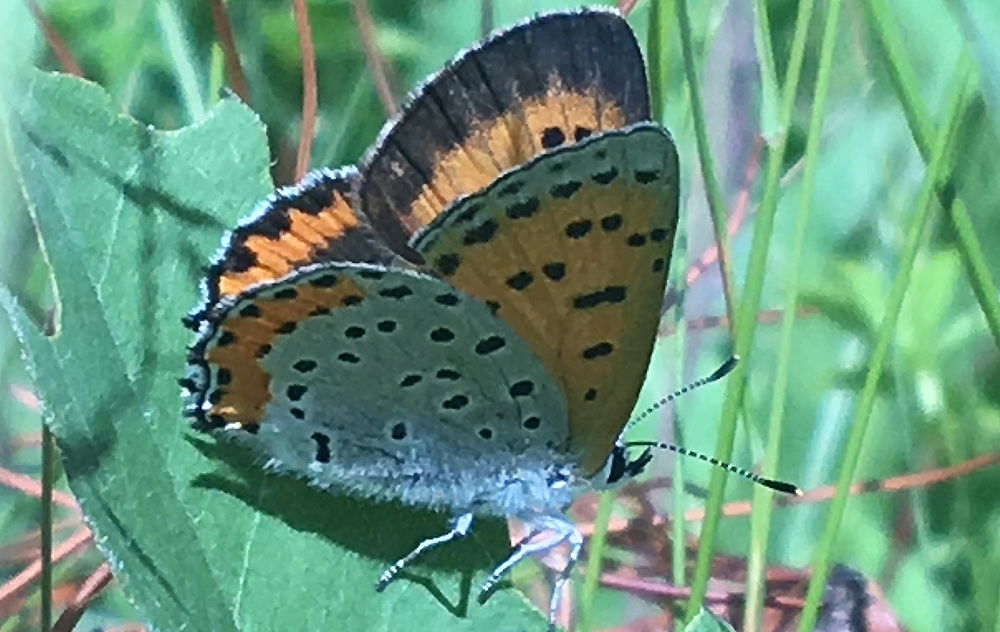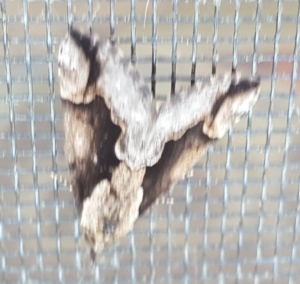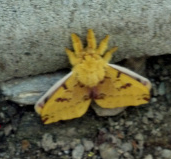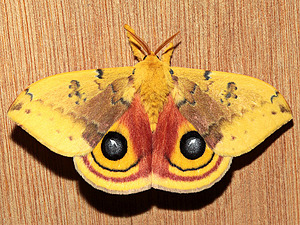SCORES & OUTDOORS: Challenge met: mystery moths identified, and a bonus
 by Roland D. Hallee
by Roland D. Hallee
Back in the June 21, 2018, issue of The Town Line, I showed a couple of photos of moths which I could not identify, and asked for help from our readership.
The following week, I received an email from John V. Calhoun, Research Associate, at the McGuire Center for Lepidoptera and Biodiversity, Florida Museum of Natural History, at the University of Florida, in Gainesville. He has studied butterflies and moths for 45 years, and has authored many scientific publications on the subject.
His wife was born in Waterville, and they own a camp in Oakland where they visit for a few weeks each summer.
Challenge A was a photo I took of a moth on my screen door at camp. I had never seen one before. John informed me, with the assistance of a colleague, James K. Adams, professor of biology, Dalton State College, in Dalton, Georgia, that it was a Baltimore Snout Moth, Hypena baltimoralis, which is a common species in much of the eastern United States. Adams is an expert at identifying many obscure moths, and is the long-time editor of the News of the Lepidopterists’ Society, which Calhoun served as president in 2016-17.
The caterpillars feed on maple trees. Maybe that is why I have not seen one at camp; there aren’t any maple trees around me. I am surprised I have not seen it at my home seeing that I have several maple trees on my property.
However, I can’t write too much about that particular moth because I could not find any information in all the research I have done. The internet has many photos and illustrations, but no information.
The second challenge, a moth that I photographed in 2015, was identified by John as the male Io Moth, Automeris io. Now, that moth I have seen before, just never in that position.
The Io moth is a colorful North American moth. It is found in a large part of the United States, and Canada.
Adult Io moths are strictly nocturnal, flying generally only during the first hours of the night. The females wait until nightfall and then extend a scent gland from the posterior region of the abdomen, in order to attract males.
The caterpillars are gregarious in all their instars, many times traveling in single file processions all over the food plant. As the larvae develop, they will lose their orange color and will turn bright green, having many spines. These stinging spines have a very painful venom that is released with the slightest touch.
Just this past week, John sent another photo. That of the Bronze Copper butterfly, which he photographed on June 29, in Benton. I guess you never know what you will find in nature. I have seen many different types of butterflies and moths, but again, never one like this.
Their range is widespread, from Alberta to northern Nevada in the west through to the east coasts of Canada and the United States. It is listed as a species of special concern in Connecticut, by the International Union for Conservation of Nature.
Adults have been observed feeding from blackberry and red clover.
So, that is our lesson on moths and butterflies for this week. I continue to be intrigued by what actually goes on in the natural world around us. So many different species of bugs and animals that are either obscure to us or with which we have little contact.
Roland’s trivia question of the week:
In the 2004 ALCS between the Boston Red Sox and New York Yankees, who was named the series MVP: Derek Jeter, David Ortiz, Derek Lowe, or Mariano Rivera?
Responsible journalism is hard work!
It is also expensive!
If you enjoy reading The Town Line and the good news we bring you each week, would you consider a donation to help us continue the work we’re doing?
The Town Line is a 501(c)(3) nonprofit private foundation, and all donations are tax deductible under the Internal Revenue Service code.
To help, please visit our online donation page or mail a check payable to The Town Line, PO Box 89, South China, ME 04358. Your contribution is appreciated!






cool